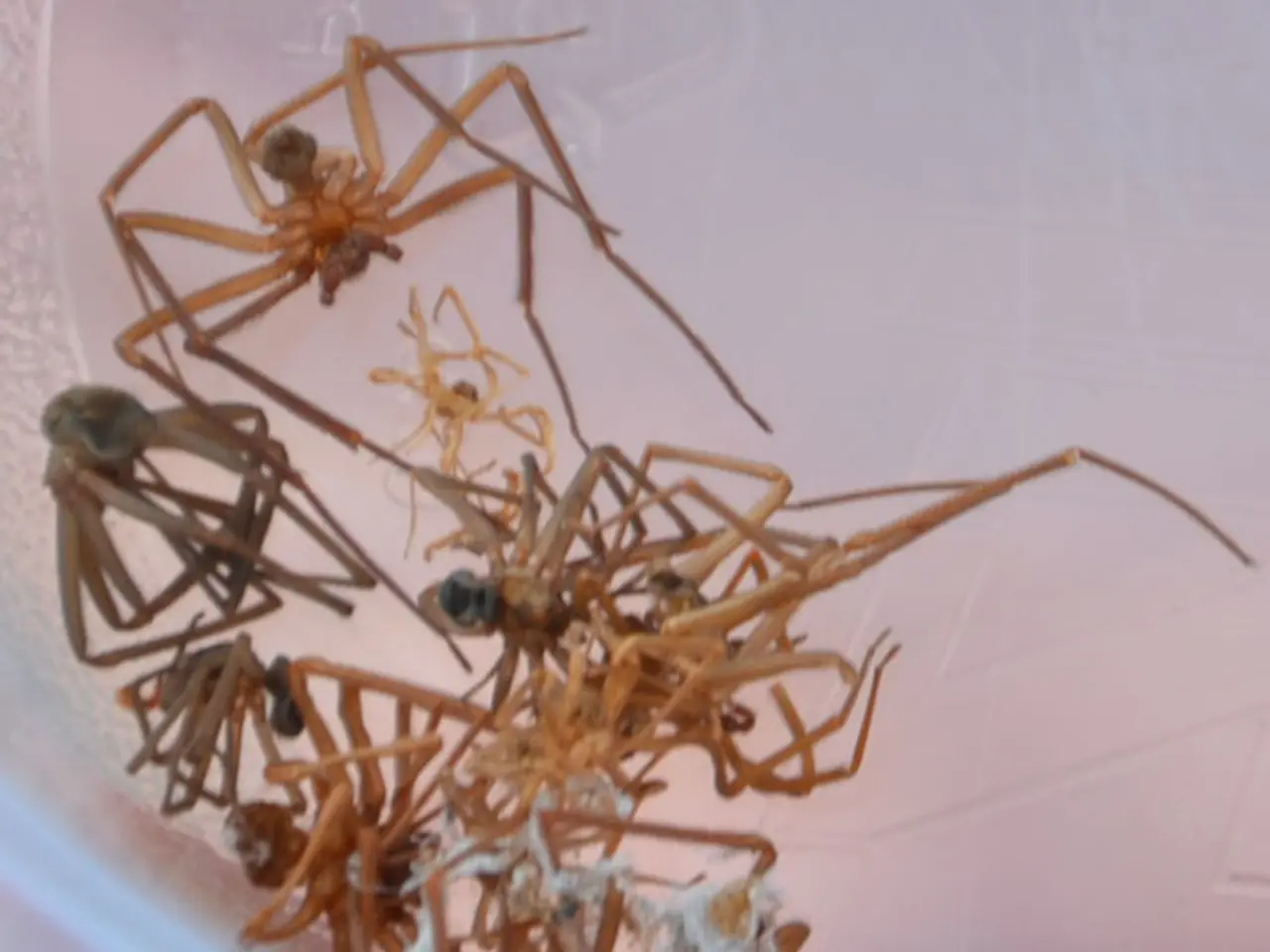A remarkable facsimile, yet it's not an ant, but rather an adult female Toxeus magnus jumping spider.
In a groundbreaking study published in the prestigious journal Science, researchers have discovered that a species of jumping spider, Toxeus magnus, produces a nutritious fluid that it feeds to its offspring, which they are calling spider milk. This is the first time such a phenomenon has been observed in spiders.
The study, led by Rui-Chang Quan, a conservation biologist at the Chinese Academy of Sciences, reveals that female Toxeus magnus spiders continue nursing their offspring even after they reach maturity. This is a surprising discovery, as it was previously believed that only Toxeus magnus spiders exhibited this behaviour.
Spiders, like some other animals, show parental care behaviours such as guarding egg cases, forgoing eating, and regurgitating pre-digested food for their young. However, the production and feeding of a milk-like fluid to the offspring is a rare occurrence outside of the mammal family.
The spider milk contains a solution of sugars, fats, and proteins, and mothers deposit milk droplets into the nest. This suggests that milk might have functions beyond nutrition. For instance, it might help jumpstart the infants' immune systems or keep the eggs moist, similar to mammalian lactation.
The study found that the survival rate for spiderlings that received both maternal care and milk was 76%, while removing the mother at day 20 reduced the survival rate to about 50%. This underscores the importance of maternal care and milk provisioning in ensuring the long-term survival of young spiders.
Interestingly, daughters, but not sons, are allowed to continue nursing even after reaching sexual maturity. This behaviour could potentially help the mothers conserve energy, as they do not have to produce as much milk for their mature daughters.
Amy Skibiel, a lactation physiologist at the University of Idaho, confirms that if a loose definition of milk is a nutritive substance that nourishes young, then spider milk would be considered milk.
The Toxeus magnus spider has so far been detected only in the Southeast Asian region. The evolution of milk-like fluids in this species raises the possibility that this is not the only spider species to have done so. The study suggests that further research is needed to explore this fascinating aspect of spider biology.
Read also:
- Peptide YY (PYY): Exploring its Role in Appetite Suppression, Intestinal Health, and Cognitive Links
- Toddler Health: Rotavirus Signs, Origins, and Potential Complications
- Digestive issues and heart discomfort: Root causes and associated health conditions
- House Infernos: Deadly Hazards Surpassing the Flames








